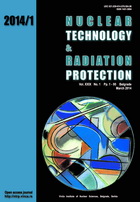
THE FREQUENCY OF CHROMOSOMAL ABERRATIONS IN SHEEP FROM THE AREA CONTAMINATED BY DEPLETED URANIUM DURING NATO AIR STRIKES IN 1999
Pages: 88-95
Authors: Svetlana L. Fišter and Slavoljub Z. JoviŠ
Abstract
This paper presents the results of cytogenetic studies in sheep from the region of Bujanovac that was contaminated by depleted uranium during the NATO air strikes in 1999. The study was conducted on sheep blood lymphocytes, in order to determine the frequency of chromosomal aberrations and to assess the presence of genetic risk as a result of the possible impact of depleted uranium. Blood samples for lymphocyte cultures were taken at random from the 20 animals of the households in the village of Borovac, near Bujanovac. The animals were chosen because they were pastured, fed, and watered in the NATO bombing area. With the purpose of comparing the results two control groups were cytogenetically analyzed, each consisted of 20 sheep from Zemun and Ov~a, two northern localities that were not contaminated with depleted uranium. The established structural chromosomal changes were of breaks and gap types, and their frequencies in sheep of all surveyed localities were within the range of basic level values that are commonly found in the sheep lymphocyte cultures analyses. Significant differences are apparent between the values defined in the sheep from Bujanovac compared to those obtained in the sheep from the northern locality (Zemun), probably as a result of breeding of animals in the farm conditions and their being less exposed to the impact of environmental agents. There were neither elevated values of polyploid and aneuploid cells nor significant differences between the sites. According to earlier known data, depleted uranium was below the detection limit of the method applied both in the soil and feed given to cytogenetically analyzed animals. Based on the low-level changes that are in the range of the basic level changes, commonly observed in sheep lymphocytes control cultures, it cannot be said with certainty that it was depleted uranium that caused the changes, or that it is widespread in the region of Bujanovac.
Key words: depleted uranium, sheep, chromosomal aberration, break and gap, NATO attack in 1999, Bujanovac
FULL PAPER IN PDF FORMAT (790 KB)
